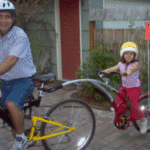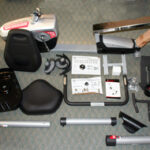Many people do some form of aerobic exercise. Some get results, and some don’t. One article can’t possibly begin to explore all the depth of this huge topic, but here are some key factors to keep in mind when you do cardio.
1. It must be sustained for at least 20 minutes. This doesn’t mean that 20 minutes of easy pedaling on a stationary bike qualifies as adequate cardio exercise. It simply means that with enough vigor, 20 minutes can create a cardiovascular training effect. Actually, even 10 minutes, if done rigorously enough, will create a training effect.
2. Never use lack of time as an excuse to avoid some cardio training. If all you have is 10 minutes, then do 10 minutes. If you don’t think such a small timeframe is worth it, then try jumping rope for 10 minutes nonstop. Or jog in place with high knees for 10 minutes. This will get your heart rate up.
3. But people actually do have a lot more than 10 minutes. If you make cardio a priority, you’ll find 30 or more minutes to slip it into your schedule every day.
4. Wear appropriate footwear with good arch supports.
5. If the idea of aerobics or cardio seems boring, then participate in a group fitness class or join a hiking group.
The following count as cardio exercise: Brisk walking on level courses; slow walking up hills; any kind of jogging; cardio classes such as step, low impact, high impact, dance and kickboxing; tennis, basketball, cross-country skiing, inline skating, cycling, and use of any kind of cardio equipment found at your local gym.
My advice is not to obsess about heart rate, even if you’re on equipment that has a heart rate monitor. A reading from a machine may not be accurate. Unless you are under doctor’s orders to monitor heart rate, you should instead pay attention to how you feel throughout the session. Take the talk test. If you can easily carry on a conversation, you’re not working hard enough. Going through the motions is not enough to incite improvement in your body’s immune system, generate growth of denser capillaries, or cut your cancer and type 2 diabetes risk.
It’s okay to be out of breath. The human body was designed to exert itself. So if you use a stationary bike, really pump away! It’s okay to break a sweat. It’s okay to get “pooped out” after only 10 minutes. At that point, pedal easily for a few minutes to recover, then go at it again. This training principle can be applied to all cardio venues. You can also find the pace at which, if sustained for longer than 10 minutes, gets you winded and feeling worked.
If conversation is difficult, then you are training hard enough to spark improvement in health and fitness, which includes fat loss. Give yourself a numerical rating as well, on a scale of 1 to 10, when it comes to effort. A rating of 1 means the level of exertion required to lie in a recliner, eat ice cream and watch TV. A level 10 means how you’d feel if you just tried to outrun a train. So when you do any kind of cardio, be it treadmill, stair stepper, aerobics class or neighborhood walk, be sure that your perceived level of exertion rating for sustained work is about 5-7.
If you’re new to cardio exercise, you may want to go at a lighter exertion, but again, pay attention to how your body feels. If you feel sick or ill in some way, cease the activity and drink water. The ill feeling is almost always caused by insufficient nutrition preceding the workout, plus inadequate water intake. If you feel like a muscle pull or strain is imminent, stop the activity and rest for a few days.
Do not feel guilty if you spend one hour a day doing cardio. The human machine was not designed to sit in an office all day, nor sit for hours and hours every week in front of a TV or computer. Think of how much time you spend in your life in a seated, inert position: talking on the phone, balancing the checkbook, opening mail and reading the newspaper, eating, socializing, reading, etc., not to mention all the time you may be sitting on the job.
So don’t feel like a fanatic if you commit to one hour a day of cardiovascular exercise. This will help offset all the time you spend sitting.
Now, if you’re on your feet all day at the workplace, never count this as your cardio exercise! If your feet are killing you at the end of the day, this reflects poor footwear, rather than any kind of workout. Five thousands footsteps at work do not necessarily translate into training that improves cardiorespiratory function.
You must get your heart rate up. Aerobic exercise should force you to breathe harder. You must impose a demand on your body that forces its cardiorespiratory system to adapt. When the body is forced to adapt, it requires more energy than usual. It will get some of this energy from stored body fat. A body that’s forced to adapt will become more fit and resilient.
If you’re already doing cardio but with minimal results, then step up the pace and/or change the mode. If you’ve been walking all this time, maybe it’s time to add some jogging segments or join a step aerobics class. If you’ve been running all this time, then add some hills or replace a few running workouts with revolving staircase sessions. Variety is key.







